Le Vieux Carré et Paul Morphy
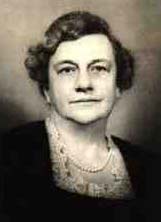 Frances Parkinson Keyes was born on July 21, 1885, in Charlottesville, Virginia. Her father was John Henry Wheeler, Head of the Greek Department at the University of Virginia. She was educated at Miss Carroll's and Miss Winsor's schools, Boston, Massachusetts, at Mlle. Dardelle's school, Geneva, Switzerland and under private tutors in Berlin, Germany. Although she never attended college, she was well read and spoke five languages.
Frances Parkinson Keyes was born on July 21, 1885, in Charlottesville, Virginia. Her father was John Henry Wheeler, Head of the Greek Department at the University of Virginia. She was educated at Miss Carroll's and Miss Winsor's schools, Boston, Massachusetts, at Mlle. Dardelle's school, Geneva, Switzerland and under private tutors in Berlin, Germany. Although she never attended college, she was well read and spoke five languages.She married Henry Wilder Keyes who was twenty-two years older. He later became the governor of New Hampshire and finally a United States Senator. Frances Keyes became a Washington socialite and a frequent guest at the White House. In 1920 she wrote a popular column for Good Housekeeping magazine called, Letters from the Senator’s Wife. Her first novel. The Old Gray Homestead, written in 1919, was published in the 1930’s. Many, many more (51) novels followed.
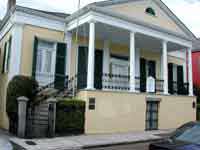
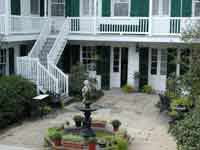 Frances Parkinson Keyes moved into the Le Carpentier house in 1944 and obtained ownership in 1952. She must have seen only it's potential because the house itself had deteriorated severely. Mrs. Keyes contracted with architectural firm of Koch & Wilson to restore the house which was to be her winter residence for the next 25 years. When she first moved in, the space now occupied by the Beauregard Keyes House’s corner garden was being used as a factory - it had once been the Pelican Steam Factory which manufactured shirts and later it would be the site of a candy factory. In order to gain ownership of the corner lot, Keyes traded some property she owned in Faubourg Marigny with the factory owners. The Vieux Carré Commission gave Keyes permission to demolish the corner factory buildings, which had been judged to be of little historic or architectural merit. The old New Orleans bricks that had been used in construction of the factories were recycled to rebuild the garden wall. Her studio at the back of the large courtyard remains intact. Keyes wrote 40 novels in this studio, all in longhand, among which are Dinner at Antoine's, Madame Castel's Lodger and The Chess Players.
Frances Parkinson Keyes moved into the Le Carpentier house in 1944 and obtained ownership in 1952. She must have seen only it's potential because the house itself had deteriorated severely. Mrs. Keyes contracted with architectural firm of Koch & Wilson to restore the house which was to be her winter residence for the next 25 years. When she first moved in, the space now occupied by the Beauregard Keyes House’s corner garden was being used as a factory - it had once been the Pelican Steam Factory which manufactured shirts and later it would be the site of a candy factory. In order to gain ownership of the corner lot, Keyes traded some property she owned in Faubourg Marigny with the factory owners. The Vieux Carré Commission gave Keyes permission to demolish the corner factory buildings, which had been judged to be of little historic or architectural merit. The old New Orleans bricks that had been used in construction of the factories were recycled to rebuild the garden wall. Her studio at the back of the large courtyard remains intact. Keyes wrote 40 novels in this studio, all in longhand, among which are Dinner at Antoine's, Madame Castel's Lodger and The Chess Players.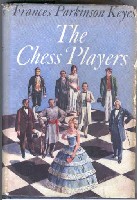
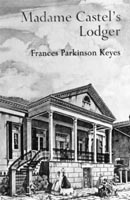 The
Chess Players, a stylized "historical" novel based on the life of Paul Morphy, has contributed to the misinformation about the life and personality of this great chess player.
However, the novel is, at the same time, rich in details about Morphy's ancestry
and about New Orleans.
The
Chess Players, a stylized "historical" novel based on the life of Paul Morphy, has contributed to the misinformation about the life and personality of this great chess player.
However, the novel is, at the same time, rich in details about Morphy's ancestry
and about New Orleans.Madame Castel's Lodger is another "historical" novel portraying General P.G.T. Beauregard incomparable as both a sodier and a lover.
This interesting aspect is the both Moprhy and Beauregard had occupied the house as one time.
Frances Parkinson Keyes is credited with spurring a revitalization movement in the Vieux Carré with her superb restoration of the Beauregard-Keyes House. But since her death in 1970 (at which time she turned the house over to the Keyes Foundation which she had formed in 1948, and supported through her royalties, prior to purchasing the house) the house, though a National Historic Landmark, is again falling apart. This time not due to neglect, but rather due to something more insidious and more difficult to remedy: termites.
The curators claim: "After the foundation has shelled out thousands of dollars for termite repairs, its resources from book royalties have all run out...now we are dependent on tourist dollars and are competing with Bourbon Street. In the past few years, termites have progressively undone much of the renovation work, leaving parts of the house in disrepair."
It's a vicious cycle.